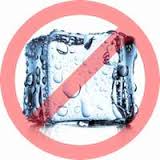This post quotes extensively from an article (PDF) by Dr Geoffrey C. Goats (School of Occupational Therapy and Physiotherapy, University of East Anglia, Norwich, UK) in the British Journal of Sports Medicine, Volume 28, Issue 3, 1994, which reviewed previous research into the effects of massage on blood flow and composition, oedema, connective tissue, muscle and the nervous system.
Massage – the scientific basis of an ancient art: part 2. Physiological and therapeutic effect
The physiological and therapeutic effects of massage are frequently questioned. This article reviews previous research into the effects of massage on blood flow and composition, oedema, connective tissue, muscle and the nervous system. Although further investigations are clearly required in certain areas, the discussion demonstrates that the use of massage in sports medicine can be justified according to orthodox scientific criteria.
Arterial blood flow
Massage dilates superficial blood vessels and increases the rate of blood flow. Massage appears to be better for improving blood flow than other techniques routinely used for the purpose. Tracer experiments have shown that effleurage, one of the least penetrating massage techniques, significantly increased blood flow.
Venous blood flow
Deep massage promotes venous return and will increase cardiac stroke volume.
Blood clotting
Thrombosis frequently results from poor venous return and can be prevented by massage.
Oedema
Massage reduces swelling very effectively and is used widely for this purpose in sports therapy.
Connective tissue
Most sports therapists acknowledge that preliminary ‘warming up’ exercises are a necessary preparation for safe athletic activity. One comparative study weighed the efficacy of a standard athletic warm-up programme against massage or stretching exercises (and found that) massage had a significant beneficial effect (while) the ‘warm-up’ exercises were least effective.
Muscle
Muscle spasm is extremely uncomfortable, being both the product and the cause of pain. Massage reduces discomfort, relieves the associated muscle spasm and permits improved function.
Pain
Massage has traditionally been used to relieve pain, although research has only recently provided an acceptable physiological explanation of this observation. Massage produces short-lived analgesia by activating the ‘pain gate’ mechanism. Massage is a potent mechanical stimulus and a particularly effective trigger for the pain gate process.
Relaxation
Manual therapy is a well documented aid to relaxation. Physical relaxation, whether induced for enjoyment or the treatment of pain, can improve blood flow, reduce muscle tone and tension in connective tissue, and thus accelerate physical repair
Summary
Massage is an ancient therapy enjoying renewed interest, particularly in sports medicine. The techniques remain an art but research continues to clarify physiological mechanisms that underpin the various therapeutic effects. Massage is indicated in sports therapy when inflammation fails to resolve or healing is delayed, and when tissue drainage or perfusion appear inadequate. Shortened or adhered connective tissue can be mobilised and elongated. Massage will help to reduce pain, restore normal muscle activity and thus re-establish normal function. The close physical contact that massage requires between therapist and client facilitates accurate assessment of dysfunction. This is responsible, in part, for the therapeutic success of these techniques.
The contraindications to massage are few and primarily designed to prevent a precipitate drop in blood pressure or the spread of some harmful factor in the body fluids.
A safe, low-technology therapy, massage is a valuable treatment option poised to grow once again in importance as the scientific principles upon which it is founded are clarified.
—





